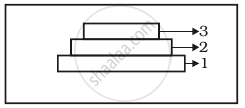Advertisements
Advertisements
Question
The following diagrams are the age pyramids of different populations. Comment on the status of these populations.

Solution
Fig.A: It is a ‘pyramid’ shaped age pyramid. In this figure, the base i.e pre- reproductive stage is very large when compared with the reproductive and past reproductive stages of the population. This type of age structure indicates that the population would increase rapidly.
Fig.B: It is an ‘inverted bell’ shaped pyramid. In this figure, the pre-reproductive and reproductive stages are the same. This type of age structure indicates that the population is stable.
Fig.C: It is ‘Urn’ shaped pyramid. In this figure, the pre-reproductive and reproductive stages are less than the post-reproductive stage of this population. In this population more older people are present. This type of age structure indicates that the population definitely is declining.
APPEARS IN
RELATED QUESTIONS
(a) Name the two growth models that represent population growth and draw the respective growth curves they represent.
(b) State the basics for the difference in the shape of these curves
(c) Which one of the curves represents the human population growth at present? Do you think such a curve is sustainable? Give reason in support of your answer.
How does an age pyramid for human population at given point of time helps the policy-makers in planning for future.
Answer the following question.
What is "population" according to you as a biology student?
Mention the different ways by which the population density of different species can be measured.
Measures of ‘Central tendency’ refer to:
`"dN"/"dt" = "rN" (("K"- "N")/"K")` in logistic growth "K" represents:
Which one of the following organisms reproduces sexually only once in its lifetime?

What type of population growth is represented by the above age pyramid?
An individual and a population has certain characteristics. Name these attributes with definitions.
Write the best method to measure the population density of a single Banyan tree in comparison to Partlzenium weeds in a forest by an ecologist. Explain and justify your answer.
